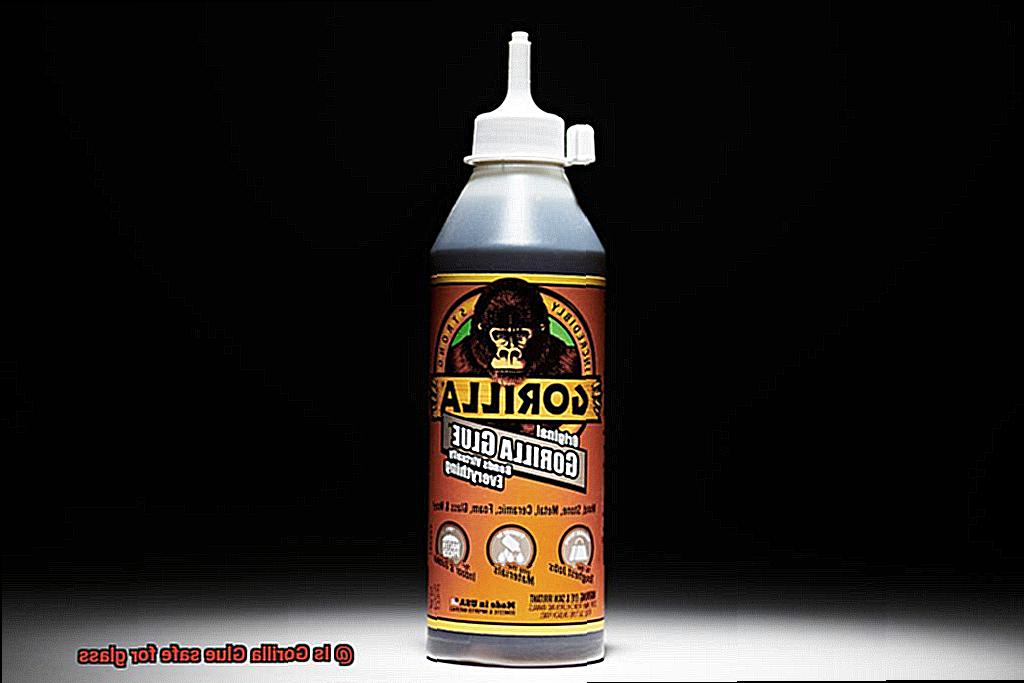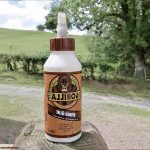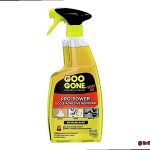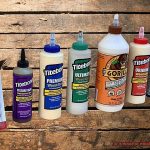Curious about whether Gorilla Glue is glass-friendly?
Well, you’ve come to the right place. We’re here to tackle this burning question and give you the lowdown on DIY glass bonding.
Glass, that marvelous material used in countless ways, deserves an adhesive that won’t let it down. Enter Gorilla Glue, a popular choice praised for its strength and adaptability.
But hang on a second – can we trust it with our precious glass creations? In this blog post, we’ll dive into the safety side of things and arm you with all the knowledge you need to make an informed decision.
So buckle up and get ready to discover if Gorilla Glue is the perfect partner for your glass projects.
What is Gorilla Glue?
Contents
- 1 What is Gorilla Glue?
- 2 Is Gorilla Glue Safe for Glass?
- 3 Preparation of the Glass Surface
- 4 Roughening the Glass Surface
- 5 Applying Gorilla Glue to Glass
- 6 Drying and Curing Times for Gorilla Glue on Glass
- 7 Advantages of Using Gorilla Glue on Glass
- 8 Disadvantages of Using Gorilla Glue on Glass
- 9 Conclusion
When it comes to adhesive solutions, one name stands above the rest: Gorilla Glue. This remarkable product has become the go-to choice for professionals and DIY enthusiasts alike, thanks to its unparalleled strength, versatility, and durability. In this article, we will dive into the world of Gorilla Glue, exploring what it is, how it works, and the key characteristics that make it the ultimate adhesive solution.
What is Gorilla Glue?
Prepare to be amazed by the power of Gorilla Glue. This extraordinary adhesive is a type of polyurethane glue that has taken the world by storm. Originally developed for industrial use, it has quickly gained popularity among consumers due to its exceptional effectiveness in a wide range of applications. Whether you’re working on wood, stone, metal, ceramics, or even glass, Gorilla Glue has got you covered. And with different forms available – liquid, gel, and tape – you can choose the perfect variant to suit your specific project needs.
Key Characteristics:
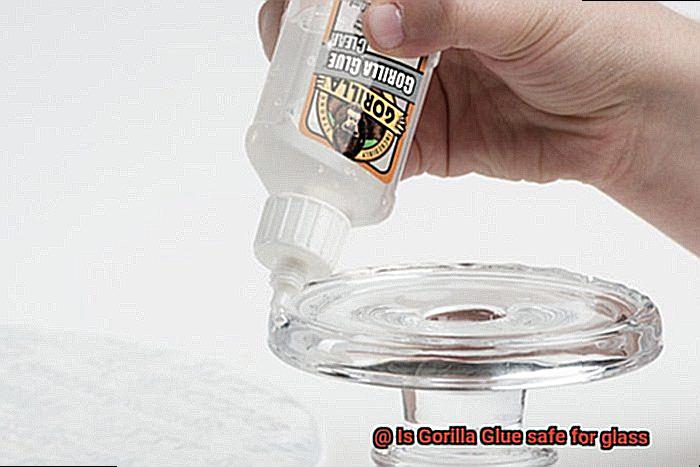
Get ready to witness the incredible capabilities of Gorilla Glue as we unveil its key characteristics:
Unyielding Bonding Strength:
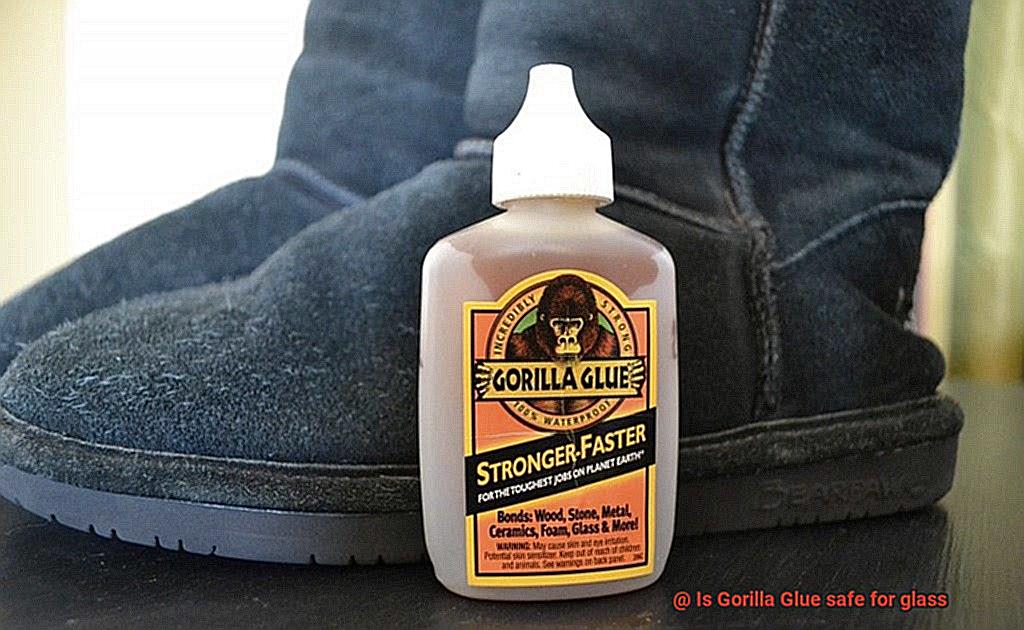
When it comes to bonding power, Gorilla Glue reigns supreme. It forms an unbreakable bond with various materials, ensuring your DIY creations withstand heavy loads and vibrations. From securing delicate glass pieces to constructing robust wooden structures, Gorilla Glue provides unwavering strength.
The Ultimate Versatility:
No matter where your creativity takes you – indoors or outdoors – Gorilla Glue is up for any challenge. This adhesive is not afraid of water or extreme temperatures. Rain or shine, hot or cold, you can trust Gorilla Glue to hold strong in any environment.
Expansion Magic:
Watch in awe as Gorilla Glue expands during the drying process, effortlessly filling gaps between surfaces. This unique feature ensures a tight and secure bond, leaving no room for doubt. Whether you’re fixing a broken chair or crafting a masterpiece, Gorilla Glue’s expansion capabilities guarantee a flawless finish.
Application Instructions:
To unlock the full potential of Gorilla Glue, follow these simple steps:
Prepare Your Surface:
To ensure a successful bond, clean the surfaces you wish to glue thoroughly. Remove any dirt or residue that might hinder the adhesive’s performance. For glass applications, use a mild detergent or glass cleaner and ensure the surface is completely dry.
Roughen the Surface (for glass applications):
For an extra-strong bond on glass surfaces, gently sand them using fine-grit sandpaper. Be cautious not to scratch the glass while enhancing its bonding strength.
Apply Sparingly:
Remember, a little goes a long way with Gorilla Glue. Apply a small amount of the adhesive onto one of the surfaces you’re joining together. Avoid excess glue, as it may lead to messy application.
Is Gorilla Glue Safe for Glass?
Gorilla Glue, renowned for its exceptional bonding strength and versatility, is a go-to adhesive for many projects. But when it comes to glass surfaces, is it safe to use? The answer is not a straightforward yes or no, as several factors need to be considered. Let’s delve into the details to determine the safety of using Gorilla Glue on glass.
First and foremost, ensuring proper surface preparation is crucial before applying Gorilla Glue to glass. Dirt, grease, or residue can hamper the bonding process. Once the glass is thoroughly cleaned, it’s time to apply the glue. However, it’s important to note that Gorilla Glue requires moisture to activate and cure effectively. Excessive moisture can lead to foaming and expansion of the glue, which may not be desirable for delicate glass surfaces.
To achieve an effective bond, it is recommended to use Gorilla Glue sparingly when working with glass. Applying excessive amounts of glue can result in unsightly residue or overflow that may be challenging to remove from the glass surface. Starting with a small amount and adding more if necessary is always a better approach.
Before committing to gluing an entire glass surface, it is wise to conduct a test on a small, inconspicuous area first. This allows you to evaluate the bonding strength and compatibility of the glue with the specific type of glass you are working with.
While Gorilla Glue can provide a strong bond on glass if applied correctly, it may not be suitable for all types of glass or applications involving flexibility or temperature changes. For specialized types of glass like tempered or heat-treated glass, it’s advisable to use adhesives specifically designed for these materials. These specialized adhesives offer enhanced performance and ensure a safer bond.
In conclusion, Gorilla Glue can be used on glass surfaces with caution. Thoroughly prepare the surface, apply sparingly, and conduct a small area test before committing to the entire surface. For specialized glass types, rely on adhesives specifically formulated for those materials. When in doubt, consult with a professional or follow the manufacturer’s recommendations.
Preparation of the Glass Surface
Preparing a glass surface before using Gorilla Glue is essential to ensure a strong and durable bond. The following steps will guide you through the process of preparing the glass surface for optimal results.
First and foremost, it is crucial to clean the glass surface thoroughly. Use a mild detergent or glass cleaner along with a soft cloth or sponge to scrub away any dirt, dust, or grease that may be present. This will remove any debris or residue that could hinder the adhesive power of Gorilla Glue.
After cleaning, rinse the glass surface with water to eliminate any remaining cleaning solution. It is important to dry the surface completely before applying the glue, as moisture can weaken the bond.
If there are remnants of old glue or adhesive residue on the glass surface, it is necessary to use a solvent to remove them. Acetone is commonly used for this purpose, but be cautious as it can damage certain types of glass. Test it on a small inconspicuous area first to ensure it won’t cause any harm.
Once the glass surface is clean and dry, it’s time to create a textured surface for better adhesion. Gently sand the surface using fine-grit sandpaper or a sanding block in a circular motion. This will roughen up the surface and enhance the adhesive bond.
After sanding, remove any sanding dust from the glass surface using a clean cloth or compressed air. This will prevent loose particles from interfering with the glue’s performance.
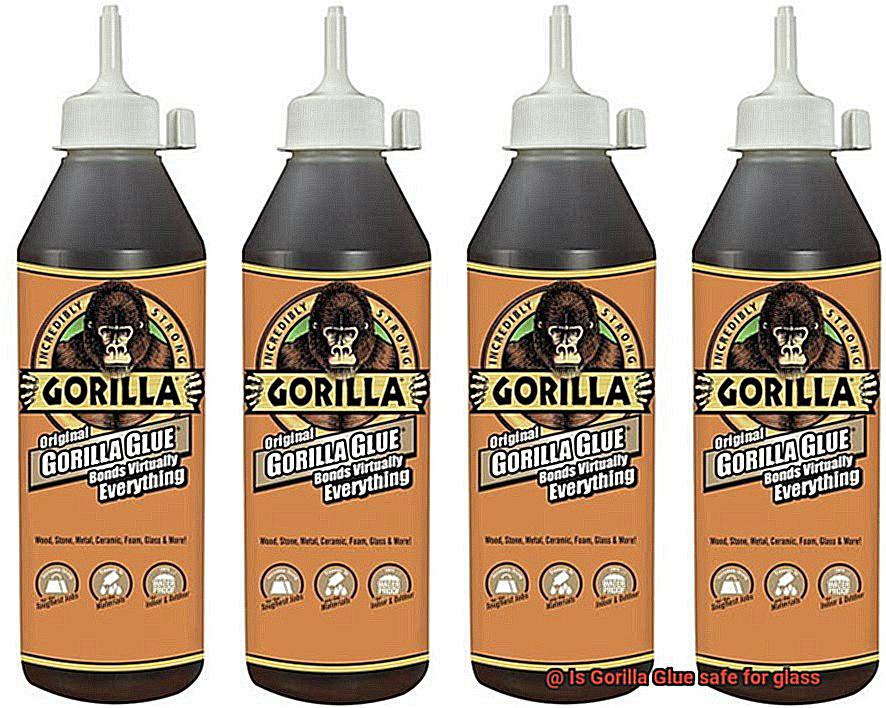
If the glass has a smooth and non-porous surface, applying a primer before using Gorilla Glue can significantly improve the bond. The primer creates a better connection between the glue and the glass, ensuring a strong and long-lasting hold.
Lastly, carefully read and follow the instructions provided by the manufacturer before applying Gorilla Glue. Different types of Gorilla Glue may have specific recommendations for application on glass surfaces, so it’s crucial to adhere to these guidelines for optimal results.
Roughening the Glass Surface
The secret lies in a critical step that often goes unnoticed – roughening the glass surface. In this comprehensive guide, we will delve into the significance of preparing glass before applying Gorilla Glue, exploring various methods, providing expert tips, and revealing the secrets to achieving a robust and long-lasting bond.
Understanding the Importance of Roughening the Glass Surface:
To achieve a strong bond, it is crucial to roughen or etch the glass surface before using Gorilla Glue.
Roughening the glass surface enhances the adhesive properties of the glue, ensuring a steadfast union.
Methods for Roughening the Glass Surface:
Sandpaper or Abrasive Pad:
Gently sanding the glass surface with fine-grit sandpaper or an abrasive pad eliminates any smooth or glossy finish.
This process creates microscopic abrasions on the glass, providing an improved grip for the glue.
Etching Cream or Solution:
Application of etching cream or solution chemically alters the texture of the glass surface.
The chemicals present in the cream or solution induce a rougher surface, ideal for bonding with Gorilla Glue.
Tips for Safely Roughening the Glass Surface:
Exercise caution to prevent scratching or damaging the glass.
Initiate with a mild approach using fine-grit sandpaper or a gentle etching solution.
Gradually increase intensity if necessary, while always conducting tests in inconspicuous areas first.
Achieving a Successful Bond:
By roughening the glass surface, you enhance its adhesive properties and ensure a robust bond with Gorilla Glue.
This step is instrumental in creating long-lasting results for your DIY projects involving glass.
Applying Gorilla Glue to Glass
Today, we’re going to unravel the mysteries of applying Gorilla Glue to glass surfaces. Whether you’re repairing a broken vase or creating a stunning glass art piece, understanding the proper steps and techniques will ensure your bond is as unbreakable as your determination to conquer any project.
Step 1: Start with Clean Surfaces
Before embarking on your gluing adventure, make sure your glass surfaces are squeaky clean. Dust, dirt, and grease can hinder the adhesive’s ability to form a strong bond. Use a trusty glass cleaner or rubbing alcohol to wipe away any impurities.
Step 2: Roughen It Up
To promote better adhesion, gently roughen the glass surface using sandpaper or a fine-grit abrasive pad. Don’t get too carried away – just a light touch will do the trick. This tiny step can make a world of difference in the strength of your bond.
Step 3: Apply Sparingly
Remember, less is more when it comes to Gorilla Glue on glass. A small amount goes a long way. Apply a thin layer of glue onto one of the glass surfaces using a brush or nozzle. Avoid excessive application, as it can lead to messiness and compromise the strength of the bond.
Step 4: Press and Hold
Once you’ve applied the glue, it’s time for the magic to happen. Firmly press the glass surfaces together and hold them in place for at least 1-2 hours. This ensures that the glue sets properly and creates an unyielding bond. Clamps or tape can be used to secure the pieces during this crucial waiting period.
Step 5: Wipe Away Excess
Gorilla Glue expands as it cures, so don’t forget to wipe away any excess glue before it dries. A damp cloth or sponge can help remove any stray blobs and keep your project looking clean and professional.
Step 6: Patience is a Virtue
Allow your glued glass masterpiece to cure for a full 24 hours. This gives the adhesive enough time to set and ensures a robust bond. Remember to avoid exposing the glued surfaces to extreme temperatures or direct sunlight during this curing period, as it may compromise the strength of the bond.
Drying and Curing Times for Gorilla Glue on Glass
Look no further than Gorilla Glue, the superhero of adhesives that creates unbreakable bonds on glass surfaces. But before you embark on your gluing adventure, it’s important to know the drying and curing times for Gorilla Glue on glass. In this article, we will take a deep dive into these crucial factors, equipping you with all the information you need to achieve optimal results.
When it comes to using Gorilla Glue on glass, one important factor to consider is the drying time. Unlike porous materials like wood or fabric, Gorilla Glue requires moisture to cure. This means that it may take longer for the glue to dry on glass surfaces. To ensure a strong bond, it is recommended to allow at least 24 hours for the glue to dry completely. However, always refer to the specific instructions provided by the manufacturer for accurate drying times.
But don’t be fooled into thinking that drying time equals curing time. Oh no. While the glue may feel dry after 24 hours, it continues its superhero transformation over time. It undergoes a process called curing, where it gains maximum strength and durability. For this transformation to take place, it is advised to wait a minimum of 72 hours before subjecting the glued glass surface to any stress or heavy use.
Now, let’s talk about some environmental factors that can influence these times and make our superhero work even faster. Picture this: higher temperatures and lower humidity levels. These elements can speed up the curing process, making your bond stronger in a flash. On the other hand, lower temperatures and higher humidity might slow down our superhero’s transformation. So keep these factors in mind when planning your gluing adventure.
To achieve a proper bond between glass surfaces, it is crucial to follow the recommended drying and curing times. We must give our superhero the time it needs to work its magic. Rushing the process may result in a weaker bond that can easily break or fail under stress. So, be patient, my friend, and allow the glue ample time to cure for a bond that will stand the test of time.
Now, before you unleash your inner gluing superhero, there are a few more tips to consider. First, make sure the glass surface is clean and free from any dirt or residue. Use a glass cleaner or rubbing alcohol to give it a thorough cleaning. If necessary, roughen the surface slightly with sandpaper to provide better adhesion. And remember, a little goes a long way with Gorilla Glue. Apply a thin layer evenly onto one surface, press the surfaces together firmly, and secure them in place with clamps or tape until the glue dries.
Advantages of Using Gorilla Glue on Glass
Strength is one of the key advantages of using Gorilla Glue on glass. This adhesive forms an incredibly strong bond that can withstand impact, shock, and vibration. Whether you’re repairing a broken glass item or creating a masterpiece that needs to stand the test of time, Gorilla Glue has got your back.
In addition to its strength, Gorilla Glue creates a transparent bond. Unlike other adhesives that leave behind a visible residue or yellowing effect, Gorilla Glue dries clear, ensuring your bond is practically invisible. This is especially important when working with glass as it allows for a seamless and aesthetically pleasing finish.
Durability is another advantage of using Gorilla Glue on glass. Once it cures, it becomes waterproof and weatherproof, making it perfect for both indoor and outdoor glass projects. Whether you’re fixing a cracked window or creating a stunning piece of art for your garden, you can trust that Gorilla Glue will hold up against the elements.
Versatility is yet another advantage of Gorilla Glue. It can be used on various types of glass surfaces, including smooth glass, stained glass, mirrors, and even glass beads or marbles. No matter what kind of glass project you’re working on, Gorilla Glue has got you covered.
Applying Gorilla Glue is a breeze. The glue comes in a convenient bottle with an applicator tip, allowing for precise and controlled dispensing. Its thick consistency ensures minimal drips or spills, making the application process mess-free.
Furthermore, Gorilla Glue has a relatively fast curing time. While it may vary depending on factors like temperature and humidity, it typically sets within 1-2 hours. This allows you to complete your glass project efficiently and reduces the waiting time for the glue to fully bond.
Last but certainly not least, Gorilla Glue is known for its long-lasting durability. Once applied and fully cured, the bond formed with Gorilla Glue on glass is built to last. You can enjoy your glass creations for years to come without worrying about them falling apart.
Disadvantages of Using Gorilla Glue on Glass
Using Gorilla Glue on glass can be a tricky endeavor. This task requires careful consideration of the potential disadvantages, which include:
- Limited effectiveness: Gorilla Glue is not specifically designed for use on glass, so it may not bond as effectively as other glues formulated for glass surfaces. This can result in a weaker bond that may not hold up well over time.
- Expansion during drying: One of the major downsides of Gorilla Glue is its expansion as it dries. While this expansion helps create a strong bond on many surfaces, it can put excessive pressure on glass and potentially cause it to crack or break. This is a significant risk that can ruin your glass project.
- Foaming action: The foaming action of Gorilla Glue can also pose problems for bonding glass. It can lead to uneven bonding and gaps between the glass pieces, compromising the strength and durability of the bond. This is particularly undesirable when you want your glass project to be seamless and secure.
- Difficult removal: Removing Gorilla Glue from glass surfaces can be challenging if a mistake is made during the bonding process. Its strong adhesive properties make it difficult to remove, potentially damaging the glass in the process. This can be frustrating and costly.
- Yellowish color: Another issue with Gorilla Glue is its yellowish color when dried. This can be quite noticeable and aesthetically unappealing when used on clear glass surfaces. If you’re aiming for a pristine look, this is definitely something to consider.
- Lack of water-resistance: Unlike some specialized glass glues, Gorilla Glue is not water-resistant. This means that it may not hold up well in moist or humid environments, making it less suitable for outdoor or bathroom projects where exposure to water is common.
- Long curing time: Additionally, Gorilla Glue has a long curing time, requiring extended clamping or support to ensure proper bonding. This can be inconvenient and time-consuming, especially when working with delicate glass pieces that need to be held in place for an extended period.
- Strong fumes: Lastly, the strong fumes emitted by Gorilla Glue during the drying process can be unpleasant and potentially harmful if inhaled in an enclosed space. Proper ventilation is crucial when using this glue to ensure safety.
ttdom1Lets8″ >
Conclusion
After careful consideration and research, it can be concluded that Gorilla Glue is indeed safe for glass.
This powerful adhesive has been specifically formulated to bond various materials, including glass, with exceptional strength and durability. Its unique formula ensures a strong and long-lasting bond, making it ideal for repairing glass objects or creating new projects.
With its professional-grade quality and proven track record, you can trust Gorilla Glue to safely adhere glass surfaces without any worries.

